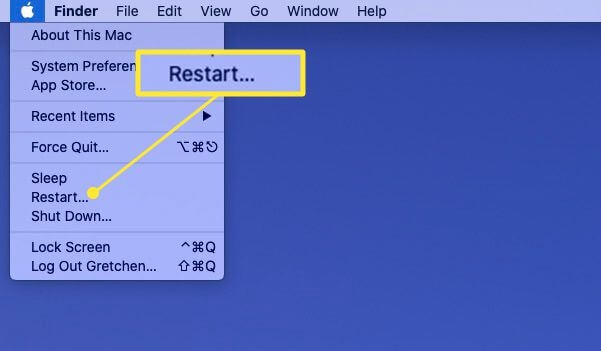Help! Mac Trash Bin Won't Let Me Empty it, How to Fix?
| Workable Solutions | Step-by-step Troubleshooting |
|---|---|
| 1. Empty Mac Trash Alternatives |
|
| 2. Can't Empty Trash Files in Use | If you see a pop-up message informing you that the system can't empty the Trash...Full steps |
Anything deleted on your Mac will first be moved to the Trash, at which point the files are not actually deleted until you empty the Trash. In other words, the files in Trash are still saved on your Mac and take the storage space. And on the other side, files put in Trash can be restored easily. Anyone who have the access to your Mac can review and restore the file that you are plan to delete.
Considering saving space on your Mac computer and protecting your personal privacy, it is a good and necessary habit to regularly empty the Trash. However, due to system or hardware errors, sometimes you can't empty the Trash on Mac. What is the exact reason for this issue and how to fix it? Keep reading, you will get the answer.
Am I Doing Something Wrong? Why Mac Trash Won't Empty
In fact, the cause of the problem is very complex. For the most part, you did nothing wrong. One of the most likely reasons is that your Mac has encountered a glitch somewhere, so emptying the Trash doesn't work properly. Luckily, there is not only one way to empty the Trash. In the next part, we will introduce several alternative ways for you to empty Trash.
Recover Deleted Files After Emptying Trash Bin on Mac
Are you looking for free ways to recover deleted files from Trash on Mac? Follow two Mac trash recovery methods in this guide to maximumly undo empty trash on Mac.
Fixes Are Here! Try Empty Mac Trash Alternatives
In this section, we introduce alternatives ranging from simple to more complex. You can choose the appropriate method according to your familiarity with the Mac. Of course, it's also possible that you won't be able to successfully empty the Trash on the first try. If this happens, don't worry, try another method.
Fix 1. Basic Try - Delete Files Directly from Mac
This method only needs two steps, it's very simple and works most of the time. Here are what you need to do.
Step 1. Open the Trash, and pull all files to the Mac desktop.
Step 2. Select all the files you plan to delete, press Command + Option + Delete to delete them all.
This shortcut will completely delete the selected file directly from the Mac without putting the file in the Trash.
Fix 2. Restart the Mac
As mentioned above, if your Mac has encountered a glitch somewhere, some operations can't be executed properly. Restart Mac can help to solve the problem quickly.
How to restart Mac:
Click the Apple icon on the menu bar, then click the Restart option. Your Mac will start to reboot.

After restarting the Mac, try to empty the Trash again.
Fix 3. Force Empty Mac Trash with Terminal
Mac Terminal is a command-line system that can help you quickly take control of your operating system and make changes. When you can't empty Trash in the normal way, you can enter Terminal to use the command line to force empty Trash.
Step 1. Use Spotlight to search Terminal, or go to Utilities > Terminal, open and enter it.
Step 2. Type sudo rm -R with a space in Terminal. Remember in this step, don't press Enter.
Step 3. Open the Trash and drag the files you want to delete to the Terminal window.
Step 4. Press Return. Mac will require you to enter the administrator password. Enter and press Return again, then see if the Trash is emptied.
Can't Empty Trash Because File in Use? Fix it Now
Sometimes, when emptying the Trash, you will see a pop-up message informing you that the system can't empty the Trash now because the selected item is in use.

In most cases, this problem occurs because the system or some software is taking up the files you want to delete in the background. You can close all running programs then try again, or simply restart Mac and have another try.
Facts You Need to Know About Mac Trash
1. You can restore any files in Trash before you empty the whole Trash. Once emptied, you have no way but to use third-party data recovery software to recover permanently deleted files.
Deep Data Recovery for Mac
- Recover lost or deleted files, Office documents, media files, emails effectively
- Recover files from emptied recycle bin, camera SD card, flash drive, and camcorders
- Support data recovery for sudden deletion, formatting, hard drive corruption, under different situations
2. Since 2020, the name of Trash has changed to Bin. So in macOS Big Sur and Monterey, the Trash is called Bin.
3. When deleting files, if you want to permanently delete files without putting them in the Trash, you can use the shortcut: Command + Option + Delete.
Related Articles
- Recover Deleted iPhoto Library and Photos on Mac 2022
- 2022 Fixed: Time Machine Won't Complete First Backup
- Multiple Choices - Fix macOS Can't Repair the Disk
- APFS Data Recovery: How to Recover APFS Files on Mac/Windows